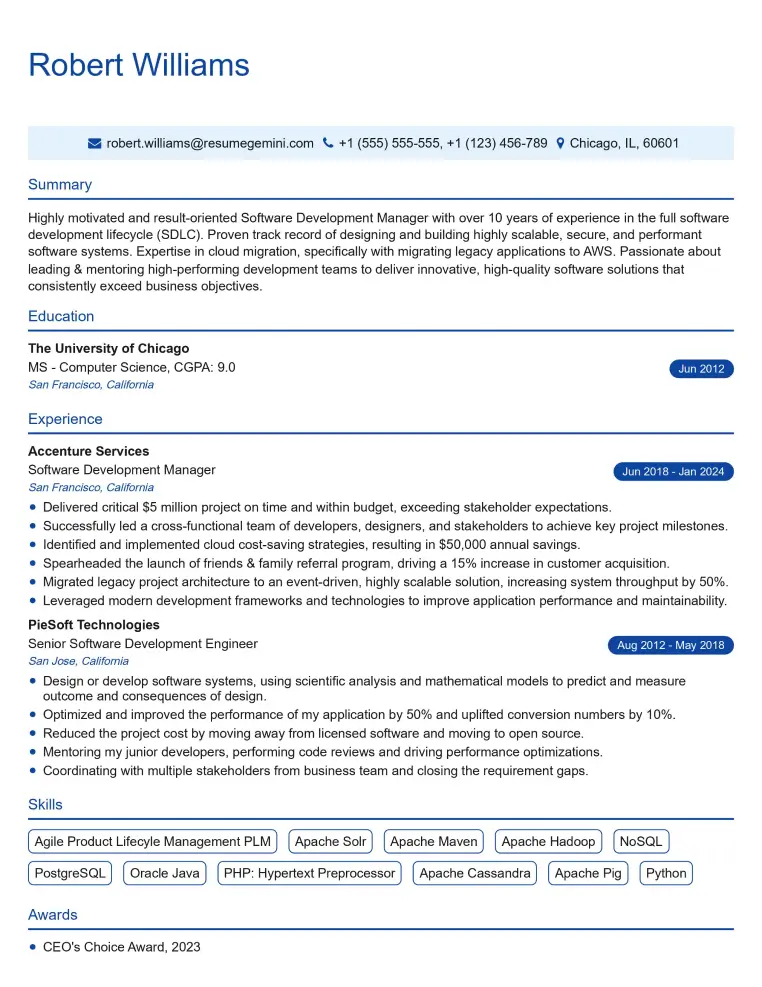In the competitive job market of today, it’s crucial to have a resume that stands out from the crowd. And that means crafting a document that is not only visually appealing but also ATS-friendly. In this blog, we’ll uncover the 5 essential secrets to creating a resume that will pass the ATS in 2024 and get noticed by recruiters.
1. Use ATS-friendly keywords and phrases
Applicant Tracking Systems (ATSs) are used by many companies to screen resumes for relevant keywords and phrases. To make sure your resume gets past the ATS and into the hands of a human recruiter, be sure to include relevant keywords and phrases throughout your resume, particularly in your skills section and job descriptions. You can find relevant keywords by researching the job description for the position you’re applying for and identifying the skills and experience that the employer is looking for.
2. Quantify your accomplishments with numbers and metrics
Whenever possible, use numbers and metrics to quantify your accomplishments and demonstrate the impact of your work. For example, instead of saying “Managed a team of 10 engineers,” you could say “Managed a team of 10 engineers, resulting in a 15% increase in productivity.” By quantifying your accomplishments, you’ll make your resume more impressive and ATS-friendly.
3. Structure your resume using clear headings and sections
A well-structured resume is easy for ATSs to parse and understand. Use clear headings and sections to organize your resume, such as “Work Experience,” “Education,” and “Skills.” This will make it easier for the ATS to identify the information it needs, and it will also make your resume more visually appealing to human recruiters.
4. Use a professional and easy-to-read font and layout
The font and layout of your resume should be professional and easy to read. Avoid using fancy fonts or colors that can be difficult to read. Instead, stick with a simple, easy-to-read font such as Arial or Times New Roman. And be sure to use a consistent font size throughout your resume.
5. Proofread carefully for any errors
Before you submit your resume, proofread it carefully for any errors. Check for typos, grammatical errors, and formatting issues. A well-proofread resume will make a great impression on potential employers and show that you’re a detail-oriented professional.
Career Expert Tips:
- Select the ideal resume template to showcase your professional experience effectively.
- Master the art of resume writing to highlight your unique qualifications and achievements.
- Checkout the resume writing tips for guidance and best practices.
- Make your 2025 brighter with a new job. Build a powerful resume with ResumeGemini and save big, enjoy exclusive discounts on premium templates.
Frequently Asked Questions (FAQ’s)
What is an ATS?
An Applicant Tracking System (ATS) is a software application used by recruiters and hiring managers to automate and streamline the recruitment process. It helps them manage job applications, screen resumes, schedule interviews, and make hiring decisions. ATSs have become increasingly common in recent years as they can significantly improve the efficiency and effectiveness of recruiting.
How does an ATS work?
When you apply for a job online, your resume will typically be processed by an ATS. The ATS will scan your resume for keywords and other criteria that are relevant to the job description. If your resume contains the right keywords, it will be ranked higher in the list of candidates. The ATS will then typically send your resume to the recruiter or hiring manager for further review.
What are the benefits of using an ATS?
There are many benefits to using an ATS, for both recruiters and job seekers. For recruiters, ATSs can:
- Save time and money by automating the recruitment process.
- Improve the quality of hires by screening out unqualified candidates.
- Make more informed hiring decisions by tracking candidate data.
- Increase your chances of getting your resume seen by a recruiter.
- Speed up the application process by automating the screening process.
- Get feedback on your resume and improve your job search strategy.
What are the challenges of using an ATS?
There are some challenges to using an ATS, both for recruiters and job seekers. For recruiters, ATSs can be:
- Expensive to implement and maintain.
- Difficult to use and configure.
- Biased against certain types of candidates, such as those with non-traditional resumes.
- Make it difficult to get your resume seen by a recruiter.
- Screen out qualified candidates who don’t have the right keywords on their resume.
- Provide feedback that is not helpful or actionable.
How can I optimize my resume for an ATS?
There are a number of things you can do to optimize your resume for an ATS. Here are some tips:
- Use keywords from the job description in your resume.
- Use a standard resume format.
- Use a font that is easy for the ATS to read.
- Avoid using images or graphics in your resume.
What are the common mistakes to avoid when optimizing for an ATS?
There are a number of common mistakes to avoid when optimizing your resume for an ATS. Here are some of the most common mistakes:
- Using too many keywords.
- Using irrelevant keywords.
- Using the wrong keywords.
- Formatting your resume incorrectly.
- Including personal information that is not relevant to the job.
Next Step:
Now that you know how to optimize your resume for an ATS, it’s time to put your knowledge into action. ResumeGemini can help you create a resume that will stand out from the crowd and get you noticed by the recruiters.
- Top 50 Most Common Interview Questions
- The Psychology of a Great Resume: Hacks to Impress Recruiters
- What Mistakes to Avoid When Writing a Resume: A Comprehensive Guide
- Elevate Your Career with Expert Resume Building: Introducing ResumeGemini
- How to Write a Resume Using Google Gemini: Step-by-Step Guide
